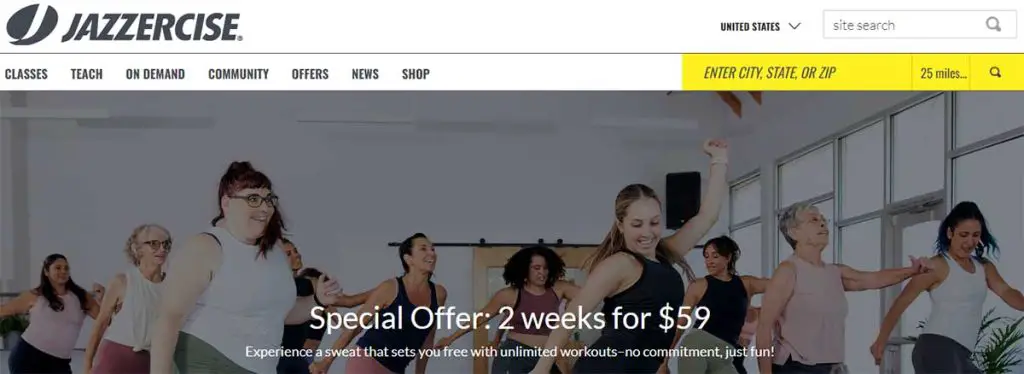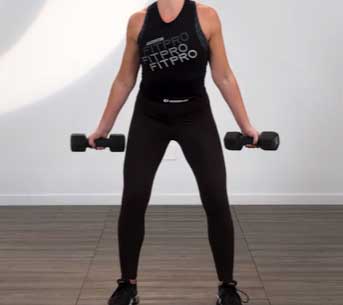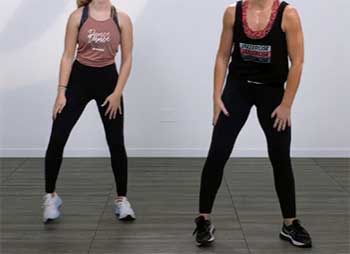Jazzercise is a dance-based group fitness program combining cardio, strength training, and stretching in 60-minute classes. Founded in 1969, it’s one of the original group exercise brands and remains popular today.
However, Jazzercise comes at a premium price point compared to other fitness classes. What factors make this iconic program so much more expensive?
Reasons For Jazzercise Being So Expensive
Here is a list of those reasons:
- Franchise Model Increases Overhead
- Extensive and Costly Instructor Training
- Capped Class Sizes Limit Revenue Potential
- Costly Music Licensing Fees
- Specialized Branded Equipment
- Brick-and-Mortar Facility Overhead
- Established Brand Justifies Price Premium
- Pre-Paid Packages & Memberships
- Personalized Experience Fosters Loyalty
Let’s talk about these reasons in detail.
- Franchise Model Increases Overhead

Jazzercise utilizes a franchise business model. Individuals purchase the rights to open and operate Jazzercise studios in designated regional territories. The initial franchise fee alone ranges from $5,000 to $15,000 depending on population density of the area.
Franchisees also have to pay ongoing royalties and marketing fees back to the parent Jazzercise company. These high upfront and recurring costs mean franchise owners need to charge higher prices per class simply to cover overhead expenses.
- Extensive and Costly Instructor Training
Becoming a certified Jazzercise instructor requires completing expensive, rigorous training. The initial training workshop costs close to $600 per person. Even after certification, instructors must pay to participate in additional training every 2 years to renew their licenses.
Very few fitness class formats require this level of credentialing for teachers. Given the substantial investments in their training, Jazzercise instructors expect higher compensation. This results in higher class fees compared to programs with minimal instructor qualifications.
- Capped Class Sizes Limit Revenue Potential
Jazzercise strictly caps class size at 32 participants for safety reasons and to ensure proper instruction. Other group fitness classes often pack in 50 people or more.
The limited headcount means Jazzercise studios can’t take advantage of economy of scale. There are fewer customers to spread out the fixed operating expenses, necessitating higher per-person pricing.
- Costly Music Licensing Fees

Music is an integral part of the Jazzercise experience.
As a choreographed dance routine, the company licenses popular, motivating music across various genres to create fun, high-energy classes.
However, these music licensing fees can cost individual studios thousands of dollars annually.
While the engaging music helps attract participants, it also drives up operating costs passed along through class prices.
- Specialized Branded Equipment
Jazzercise heavily promotes and sells their own branded fitness equipment sets that include hand weights, resistance bands, balls, mats and more. Customers pay premium prices for these specialized products only available through Jazzercise studios.
The equipment packs range from $25 for starter sets to $150+ for deluxe kits. These significant merchandise markups contribute hefty profits for the corporate franchise and individual studio owners.
- Brick-and-Mortar Facility Overhead
Most Jazzercise studios operate out of physical buildings outfitted with specialized amenities like cushioned flooring, mirrors, sound systems, as well as locker rooms and lobby areas.
There are considerable costs associated with leasing these spaces, maintaining the facilities, and staffing appropriately. As a brick-and-mortar business, Jazzercise passes those expenses along through inflated membership fees and drop-in class rates.
- Established Brand Justifies Price Premium
Jazzercise enjoys strong brand recognition and reputation as one of the very first group dance fitness programs. There is inherent value customers associate with participating in a class held under their well-known banner.
As an established legacy brand, Jazzercise can leverage goodwill to justify higher pricing versus generic competitors entering the market. The company also invests heavily in marketing and brand-building initiatives to further solidify their premier position.
- Pre-Paid Packages & Memberships
In addition to single drop-in classes, Jazzercise offers multi-class packages and monthly memberships. While the per-class cost is lower with these options, the result is customers pre-paying for large blocks of classes upfront.
Memberships also spread income over longer periods, creating more reliable revenue streams. By selling big chunks of classes in advance, Jazzercise secures customer commitment which enables them to maintain high standalone class rates.
- Personalized Experience Fosters Loyalty
Unlike large impersonal gym classes, Jazzercise provides a personalized experience where instructors take the time to learn member names and form real social connections.
There are opportunities to bond with fellow participants before and after class as well. This sense of community fosters loyalty and retention that many members feel justifies the higher prices.
- Ongoing Research and Development
Jazzercise invests substantially in continual research and development to evolve their programs. The company employs specialists to actively develop new choreographed routines, incorporate cutting-edge equipment, revamp training protocols and enhance workout programming.
This R&D requires significant resources, including maintaining dedicated facilities and staff. These innovations provide value but also drive up operating costs passed to customers.
- High-End Studio Amenities
Jazzercise studios feature top-of-the-line amenities to enhance the member experience. Cushioned wooden sprung floors provide optimal shock absorption and injury prevention. Floor-to-ceiling mirrors cover walls to allow self-monitoring of technique.
State-of-the-art sound systems deliver pristine audio. Some locations offer towel service, luxury locker rooms, smoothie bars and more. Maintaining these high-end amenities contributes to overhead costs.
Also Read: Comparison of INNOVO And ELITONE Pelvic Floor Exercisers.
- Celebrity Brand Ambassadors & Influencers

Jazzercise utilizes celebrity brand ambassadors and social media influencers as part of their marketing strategy.
Paying for endorsements and sponsorships from famous athletes, actors and models like Scarlett Johansson allows Jazzercise to tap into their follower networks.
However, securing these big-name brand representatives is very costly.
Their lucrative deals get built into the company’s marketing budgets and class pricing.
- International Expansion Initiatives
As part of growth plans, Jazzercise actively invests in expanding into international markets across Europe, Asia, and Latin America. Launching in new countries requires significant upfront costs for research, marketing, facilities, staffing and more.
Localized offerings must be tailored to culture and preferences abroad. While international reach provides future revenue potential, the substantial initial expansion investments contribute to current overhead and higher pricing.
- Charitable Tie-In Reinforces Value
Charity initiatives are deeply integrated into Jazzercise’s brand identity. Franchise studios participate in national fundraising campaigns as well as local community service partnerships.
Members take pride in supporting philanthropic causes through participation. This feel-good altruistic element helps rationalize the premium pricing.
In summary, the franchise structure, costly instructor training, music licensing fees, equipment markups and brick-and-mortar overhead all drive up operating expenses for Jazzercise studios.
However, loyal members feel the welcoming community environment, reputable legacy brand and ability to pre-purchase classes offset the higher prices.
Although more expensive than other options, many find Jazzercise still delivers an enjoyable and effective group fitness experience that’s worth the investment.
Also Read: Why Is CastleFlexx So Expensive?
Frequently Asked Questions (FAQ)
Both Zumba and Jazzercise offer fantastic dance-inspired workouts. Zumba tends to have faster Latin choreography while Jazzercise incorporates strength training, yoga and Pilates for a more well-rounded class. In terms of cost, Zumba is generally more budget-friendly. Jazzercise’s smaller class sizes and brick-and-mortar studios increase their overhead. The best option depends on individual preferences regarding pace, variety, cost and convenience.
Absolutely! The cardio and muscle-toning involved in Jazzercise can help you lose weight. Burning 400-600 calories per hour-long class adds up quickly, especially when combined with metabolism-boosting strength training. Attending multiple classes per week along with proper nutrition in a calorie deficit maximizes weight loss potential. Many have slimmed down successfully thanks to the total body workout Jazzercise provides.
Yes, Jazzercise is a great exercise option for seniors. It’s low impact with simple choreography so it’s accessible for varying fitness levels. Instructors provide modifications as needed. Class times are offered throughout the day, not just early morning like many programs catering to 9-5 workers. The upbeat music and social atmosphere also appeal to older adults. Overall, Jazzercise provides an encouraging workout appropriate for active older participants.
Absolutely! Even 50+ years after it began in 1969, Jazzercise remains extremely popular. According to the company, it currently has over 8,300 instructors teaching more than 32,500 classes every week to around 250,000 participants. While the group fitness space has gotten more crowded over the decades, Jazzercise has incredible staying power thanks to its enjoyable classes that deliver proven results. Its popularity remains strong and widespread.
Wrapping Up
In conclusion, Jazzercise’s premium pricing stems from substantial fixed costs like franchise fees, instructor training, music licensing, equipment, and brick-and-mortar studios. Ongoing investments in R&D, celebrity sponsorships, amenity enhancements and international growth further drive up overhead.
However, for many loyal members, the motivational classes and welcoming community provide intangible value that makes the higher prices worthwhile. Jazzercise remains popular because it delivers an enjoyable and effective dance-based group fitness experience.
